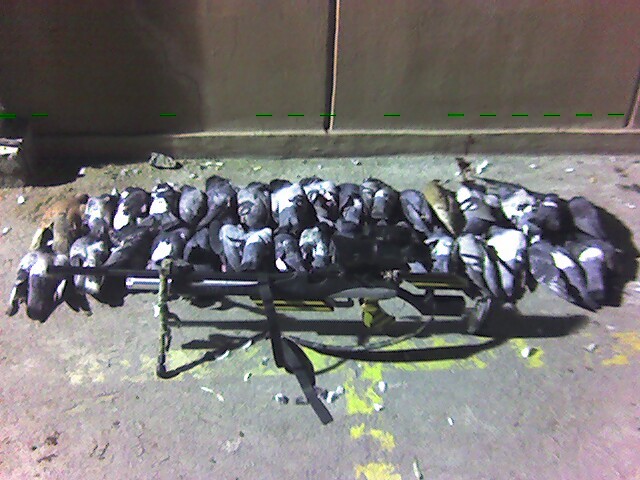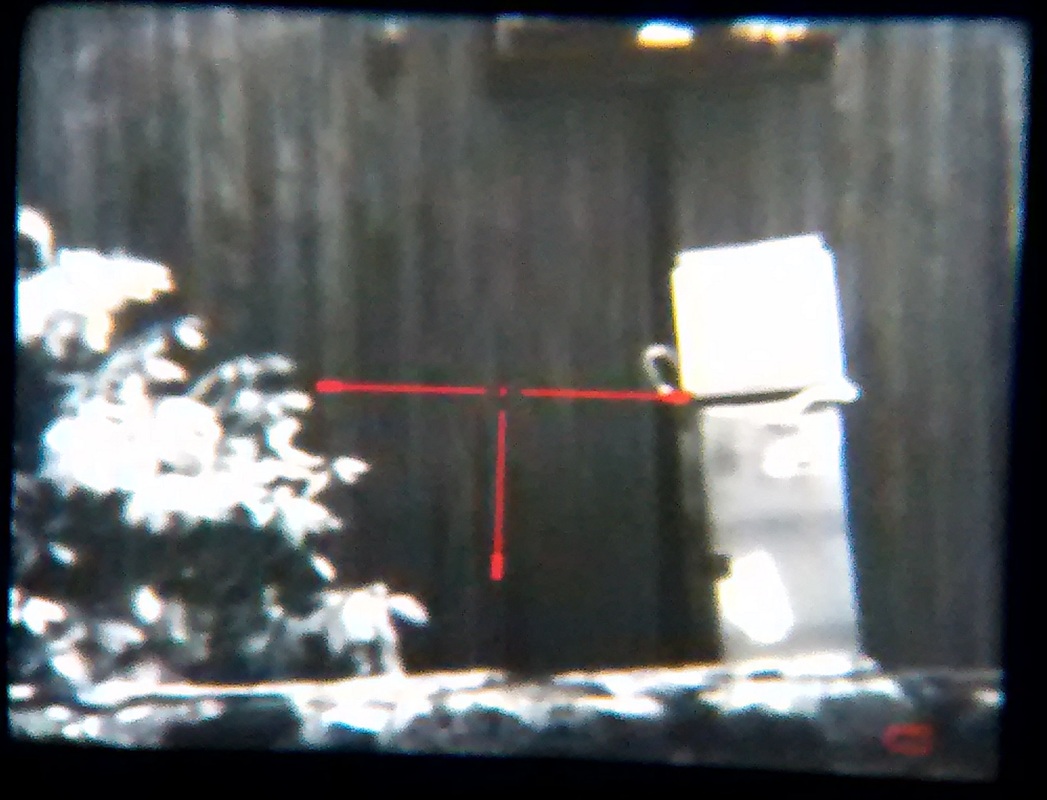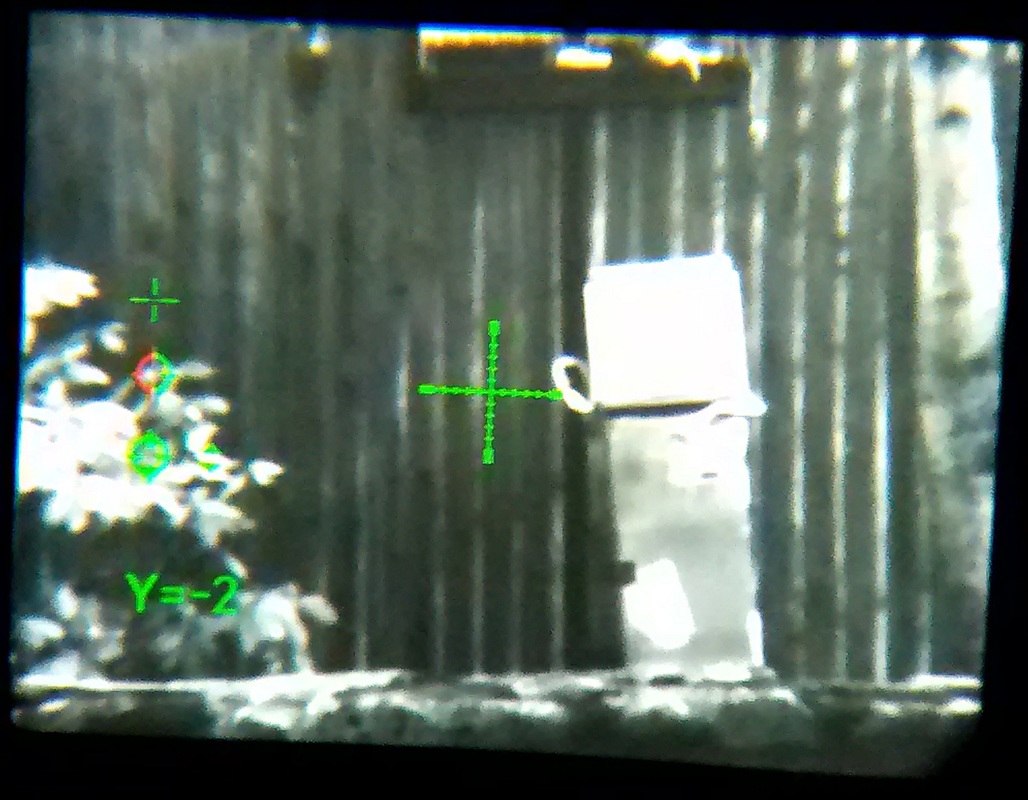
Hunting pests at night is a specialized activity. It is NOT for the beginner. Make sure that what you are planning on doing is legal in YOUR area.
When hunting pests that are "publicly recognized" as pests, still make sure that the Fish and Wildlife authorities share the public's perception.
Hunting pests in the dark carries some inherent dangers, take EXTREME safety precautions. IF you hunt in a group make absolutely certain that you and everyone else knows where everyone else is at all times.
Last, but not least: In no way are we recommending night-time pest hunting as a first recourse. It should be taken up by knowledgeable persons capable of holding the highest standards of safety not only for the party that shoots, but for everyone around them. Be even more vigilant of having a solid backstop BEFORE taking ANY shot. Be ABSOLUTELY certain of your target BEFORE taking ANY shot. Do NOT aim a rifle at ANYTHING you do not FULLY INTEND TO DESTROY.
Well, having said that, let's get down to business:
Up until a few years ago, the idea of using a photomultiplier equipped riflescope in a spring-piston gun would have been met with disbelief, warning cries and downright derision.
Nightvision scopes were simply NOT made for spring-piston air rifles.
Even before they were labelled with a "Generation something" I've been involved in photomultiplying so, I know how delicate the photomultiplier imaging tubes were, and some still are.
Over a decade ago now, I had an Aries Warrior that proved VERY useful in some pest eliminating tasks. BUT, as good as it was, the scope simply was not designed for the forward recoil of the spring-piston air rifle, so we had to design and build rigs on PCP's, either a Steyr LG-100, or a Talon SS
Many agreeable outings we had getting rid of all size of pests between belfry pigeons that threatened Colonial era architecture and art, to feral dog packs capable of attacking humans.
My experiences and ties to nocturnal pest control are some of my best memories.
Not all of them were sedate, peaceful and bucolic, but all were good.
Among the new kids on the block there are several "night/day" scopes that intrigued me.
Until last year there was no model that could really be applied to spring guns because their large size and weight negated much of the spring gun advantages.
Then there was the price. At around $700-800 all in, they were not for everyone.
Lastly, there was the issue of energy efficiency. It is no fun having to lug around battery packs.
VERY recently, our good friends at SightMark came out with a peculiar scope they call the "Photon XT". The Photon replicates the general architecture of a normal scope except the large objective now present in many scopes is replaced by a squarish video unit:
A brief call into SightMark and some paperwork and I had a sample on the way.
When it arrived I was pleasantly surprised by the light weight and compactness of the unit.
Looking at the mount in detail
The reality is that the ZR Mounts do such a wonderful job of dissociating the masses of the recoiling rifle and the scope that very little "holding power" is needed when they are working properly.
It is a TIGHT fit, and if I was keeping this system for night pesting, I would definitely mill a little off the rear ring, but until I get better contacts that allow me to do some night pesting, I will return this sample and be very happy. Someday the situation will present itself and I will know how to tackle the problem.
But let's get back to the testing.
Part of the problem with testing optical devices is that it is almost impossible to get pictures that actually reflect what the shooter sees.
For example, this is a daylight picture
By night:
The photon controls are all located in one knob, surely this will be familiar to the I-gizmo users. To me it feels unnatural, but with a few probing and messing around you can actually find what you are looking for.
You can choose between six reticles:
Standard Mil-Dot:
First, you shoot a group, then you turn on the zeroing reticle, then you correct by moving first the horizontal (marked as "x"):
So, instead of moving the POI according to where you want it to go, you move the reticle to where you are hitting.
Apart from Steyr Match Pistols, I do not know of any other sighting device that follows this logic.
Still, as strange as it is, if you have a solid benchrest or sled that can be locked into position, you get zeroed in in no time flat.
I can hear many of you commenting: Let's get on with it, how does it shoot?
Personally, I seem to do better with the PCH reticle.
The aimpoints in the target are slightly less than ½" in diameter.
At 6x it is much less magnification than I am used to, but using the PCH reticle and holding to the TOP of the little cross, you can get a pretty steady and reliable sight picture.
In hunting rigs I think that three shot groups, when the shots are taken in quick succession, are more illustrative of the system's potential than long steady 5 shot or 10 shot groups. Those are fine for target guns, but not for hunting tools.
At 35 yards using some reasonably life-sized targets the results were interesting.
Here is a squirrel about the size of a Fox squirrel:
Then get up.
Take a turn around the bumbag.
Sit down and take another shot.
Repeat for the third.
The first group shot was to the heart/lungs area, and funny, the first shot landed where it should, but the next two landed to the right.
Without being able to spot the shots, I took the second group to the ear/neck area.
When I went to see the target, I knew I had to re-zero the scope.
I did that using my favourite pigeon target:
Fiddled with the horizontal and vertical "clicks", and I think that now I finally understood them, LOL!
Anyway, after re-zeroing the scope (I should have put in one more click to the right), I took three shots at the neck and three shots at the bottom of the top wing-fold.
In real life I do not recommend using this last shot unless you are usng a gun capable of at least 20 ft-lbs of M.E. Pigeons are hard flyers and have strong muscles and feathers. At times it may feel that they also have Kevlar vests. They don't, but the feathers pretty much act in the same manner as a bulletproof vest, so take your shots carefully.
Ah! Yes, there ARE three shots in the wing. One to the left and two that went in pretty much together to the right. From the FT position and using the same technique of shooting, standing up, taking a turn around the bumbag and then sitting down to shoot again.
The Photon is an interesting scope and it mates very well with the D54.
Though money wise they cost about the same, ATN chose to cater more to the "normal" scope users that want to see color and higher definition on the sight picture.
It is also loaded with other facilities that consume energy, like WiFi, video recording to an SD card, on board drop compensation.
So, the REAL COST of the ATN is that it needs the added weight and cables to tether it to an external power supply.
The Photon was designed the other way around. It is mainly geared to those that are used to night-sights and demand maximum portability and efficiency. Yes it is monochromatic, and yes it has either an infrared Illuminator or a laser one (for extra cost), but the reality is that within normal pest-hunting ranges and situations, you do not need 200 yards reach in your illuminator and you do need to be able to go for 5 to 6 hours (23:00 till 04:00 usually) without lugging around too much weight and spare batteries.
It is also a lighter device and more compact.
And, BTW, when I asked the ATN guys if their sight was spring-piston rated they said they would guarantee it and would replace the unit if it failed, but there was no mention of a refund.
Because of the way the ATN is built, it is impossible to mount it on a ZR Mount, so that when you come down to springers, the reality is that the Photon is the only one that can fill the bill.
Had a ton of fun doing these tests and I hope some of you will find it if not useful because night-pesting is not for everyone, at least entertaining and interesting.
Keep well and shoot straight!
Héctor Medina

























 RSS Feed
RSS Feed